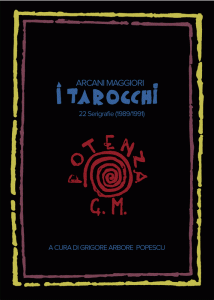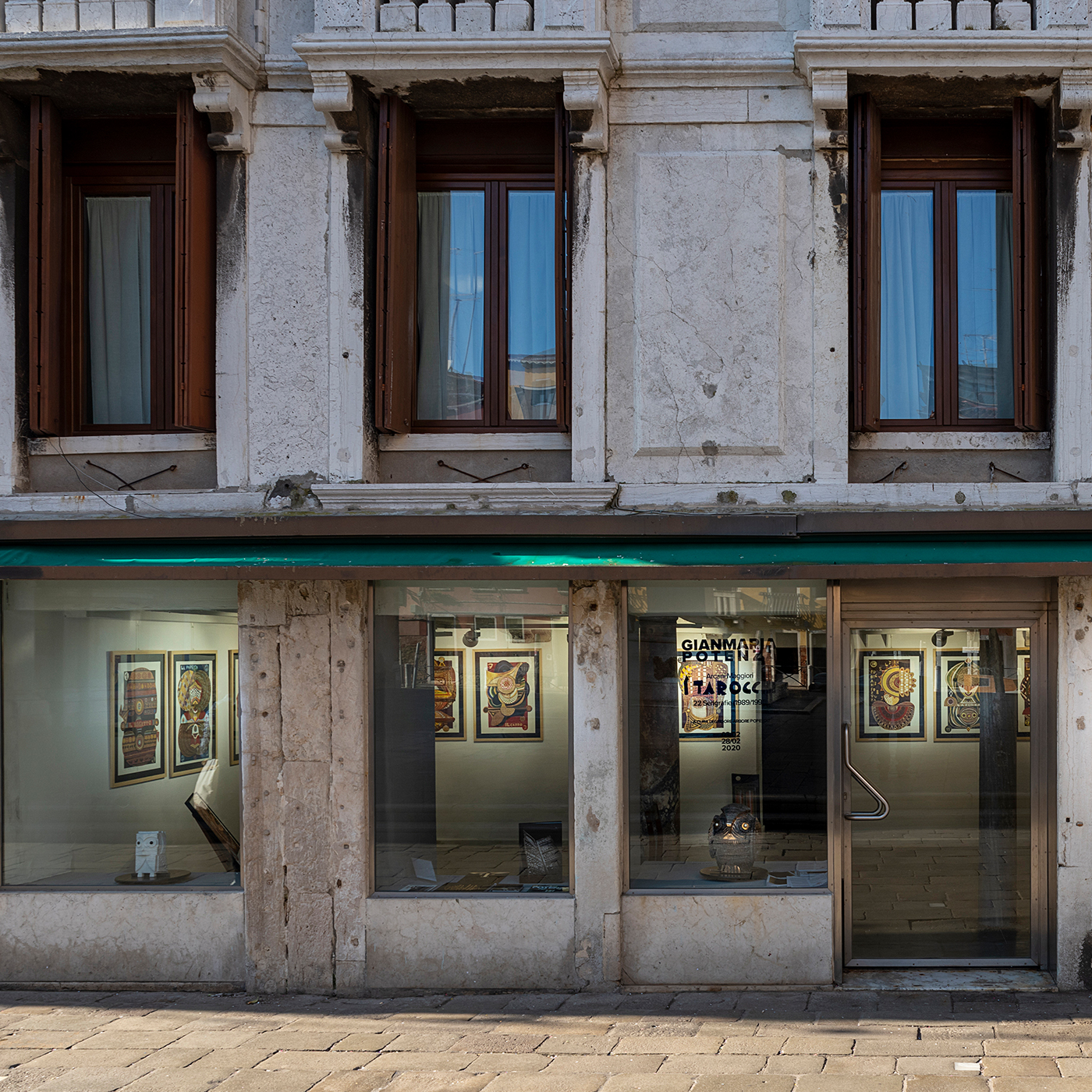MAJOR ARCANA, TAROTS
22 Silkscreen prints (1989/1991)
By Grigore Arbore Popescu
03-28 February 2020
Mon-Fri 10 am – 7 pm
OPENING
03/02
5.30 pm
ISTITUTO ROMENO DI CULTURA
E RICERCA UMANISTICA DI VENEZIA
Palazzo Correr, Campo Santa Fosca
Cananregio 2214, 30121 Venice
Speakers at the opening event include Ambassador Gianpaolo Scarante, President of the Ateneo Veneto and Enzo Santese, writer and art critic.
Major Arcana, TAROTS brings to Venice Gianmaria Potenza’s graphic research, after the most recent artist’s Russian exhibitions, at the Museum of the XX and XXI Century Art of St. Petersburg (November-December 2019) and at the Regional Art Museum of Vologda (December-January 2020).
The exhibition presents a series of 22 silkscreen prints realised by Gianmaria Potenza between 1989 and 1991. These works faithfully reproduce the original series made by the artist in 1986 on wooden boards of different thicknesses, now part of the Collection of the Banca Monte dei Paschi di Siena. This limited edition comprises 99 pieces bearing Arabic numerals, 40 with Roman numerals and 10 artist’s proofs, printed in up to 40 colours on special Fabriano paper with the insertion of metals.
Potenza’s Tarots issue is from a very deep source of inspiration. The artist’s communicative power and spontaneity have created an almost unconscious syntony with the profoundly esoteric dimension of the Arcana. On one hand, this is proof of the archetypal nature of these symbols present in all men, and on the other, shows to what extent Gianmaria Potenza’s work is free of futile cerebral adjuncts which would cramp his creativity and expressive force. The twenty-two Greater Arcana, each a symbol of a stage in the life and development of man, are depicted as characters, busts and faces, whose attire reinforces their nature. In this way, the Tarots become genuine masks worn by man in the game of changing roles that he is forced to play throughout his life. The artist’s vision not only emphasises how relative each point of view is and the transitory nature of any given role, but also man’s central position in interpreting the reality in which he is immersed.

